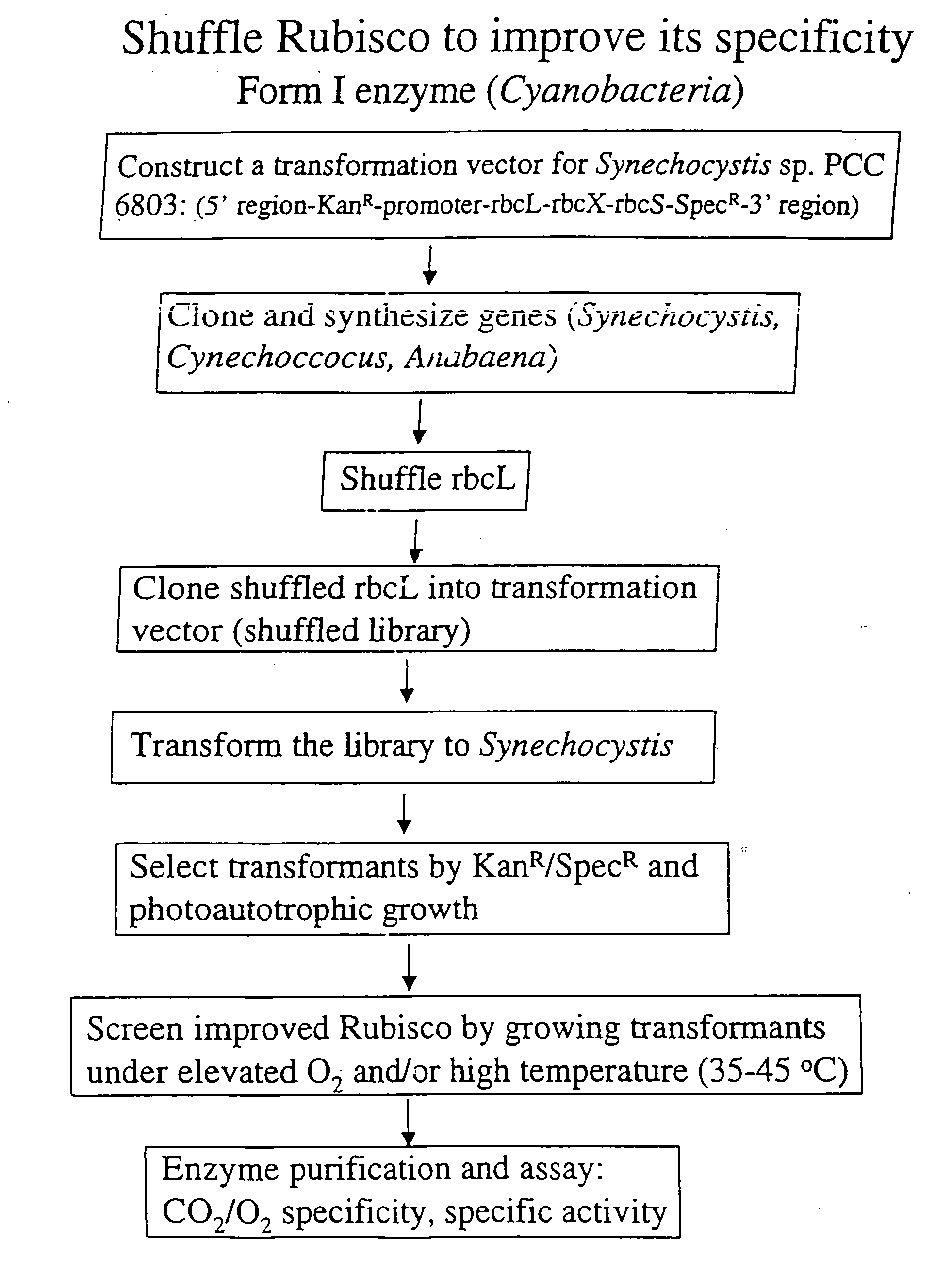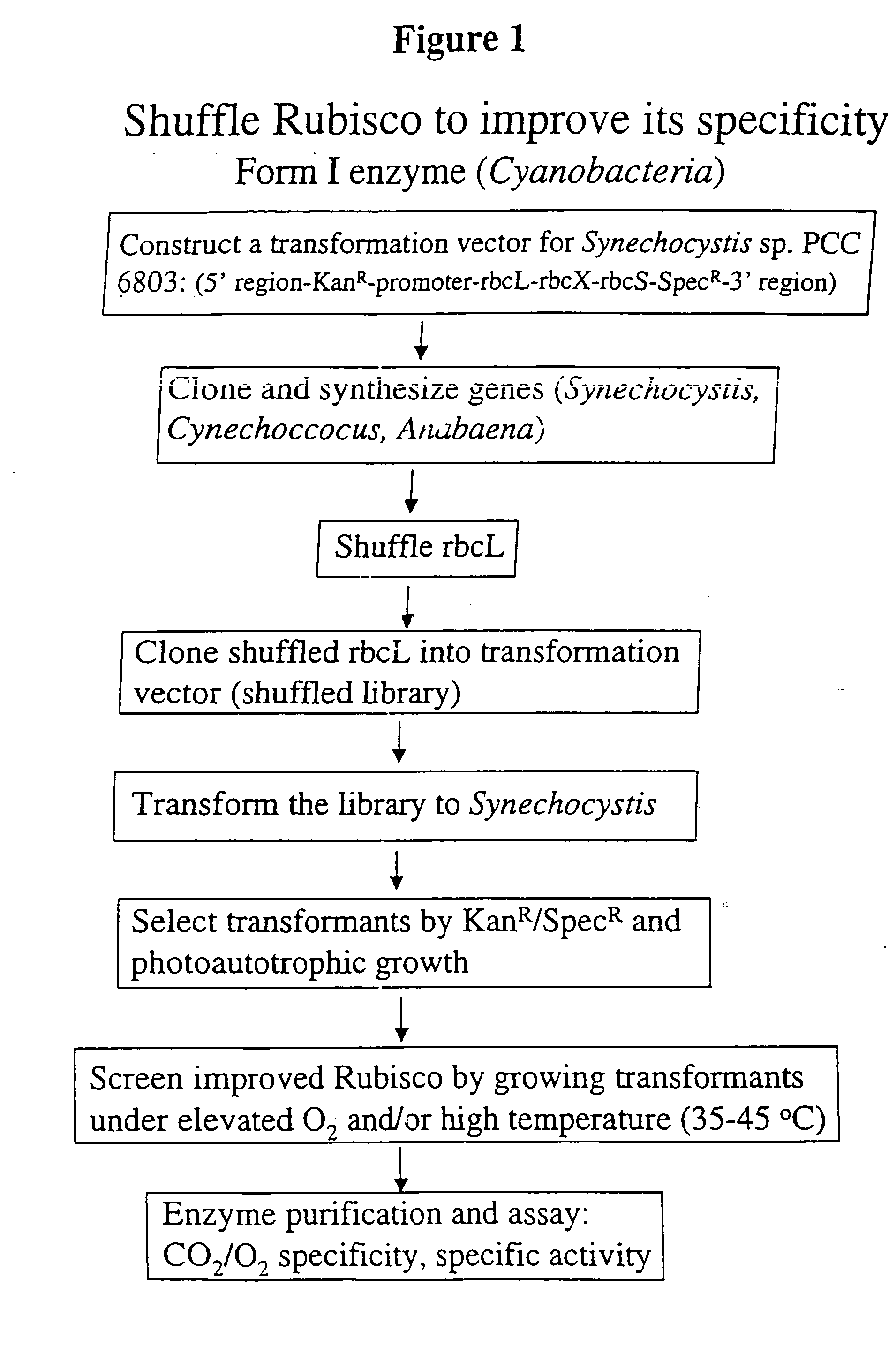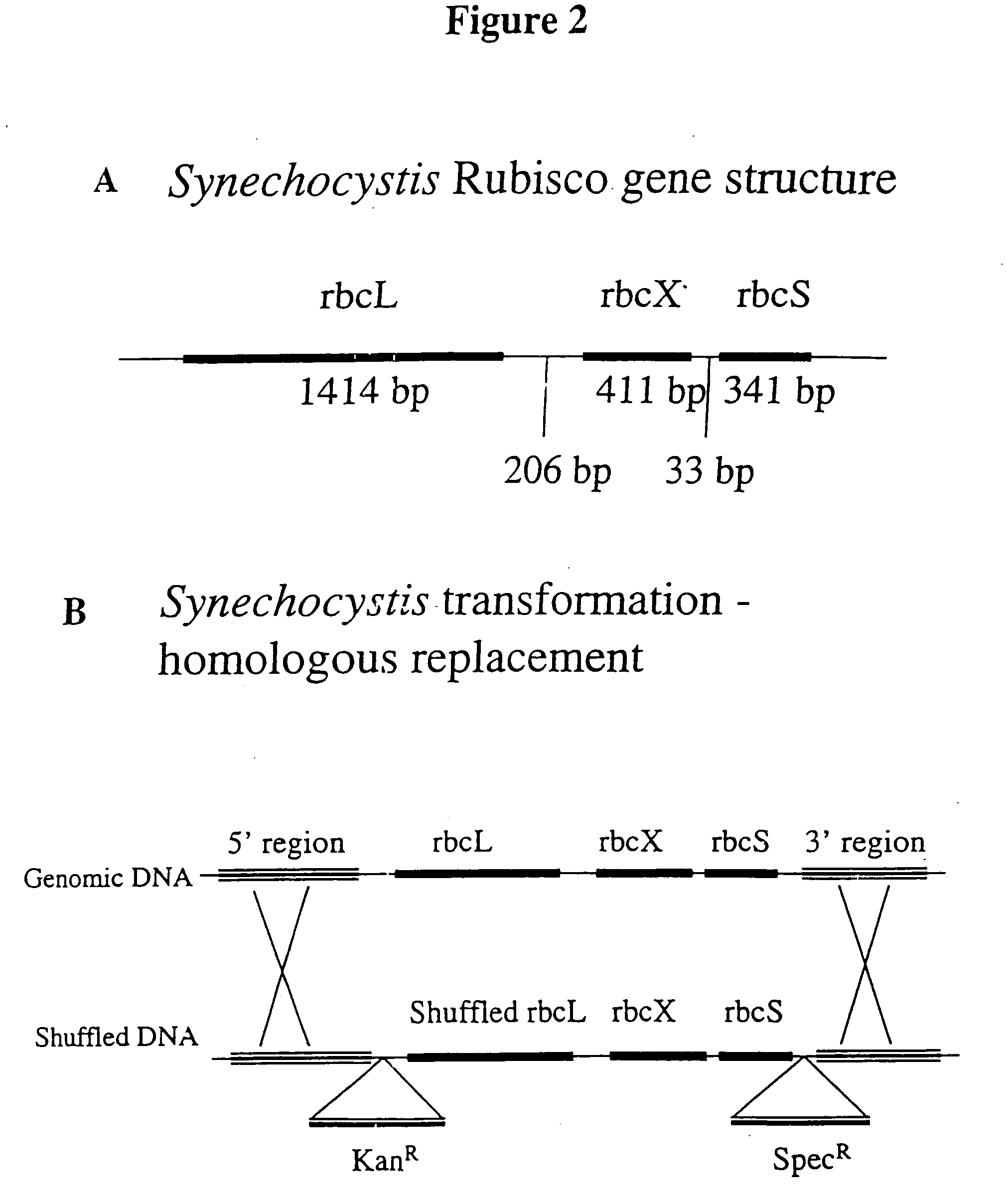[0018] The invention provides an enhanced Rubisco
protein having Rubisco catalytic activity wherein: (1) the Km for CO2 is significantly lower than a
protein encoded by a parental
polynucleotide encoding a naturally-occurring Rubisco
enzyme, (2) the Km for O2 is significantly higher than a
protein encoded by a parental polynucleotide encoding a naturally-occurring Rubisco
enzyme, and / or (3) the ratio of the Km for CO2 to the Km for O2 is significantly lower than a protein encoded by a parental polynucleotide encoding a naturally-occurring Rubisco enzyme.
[0032] In an embodiment of the method, a host
cell comprising a non-
photosynthetic bacterium, such as E. coli, lacking an endogenous
ribulose-5-
phosphate kinase activity, is transformed with an
expression cassette encoding the production of a functional
ribulose-5-
phosphate kinase (“R5PK”) activity, thereby forming an R5PK host
cell. R5PK encoding sequences are selected by the skilled artisan from publicly available sources. The method comprises transforming a
population of R5PK host cells with a
library of Rubisco polynucleotides, each Rubisco polynucleotide encoding a species of a shuffled Rubisco L
subunit operably linked to a transcriptional control sequence forming an L
subunit expression cassette, optionally including an
expression cassette encoding a complementing Rubisco S
subunit, culturing the
population of transformed R5P host cells in the presence of labeled
carbon dioxide (e.g., 14CO2) and / or labeled
bicarbonate for a suitable
incubation period, determining the amount of labeled carbon that is fixed by each transformed host
cell and its clonal progeny relative to the amount of carbon fixed by untransformed R5PK host cells cultured under equivalent conditions, including culture medium,
atmosphere, incubation time and temperature, and selecting from said
population of transformed R5PK host cells and their clonal progeny cells which exhibit labeled carbon fixation at statistically significant increased amount relative to said untransformed R5PK host cells, and segregating or isolating said selected transformed R5PK cells thereby forming a selected subpopulation of host cells harboring selected shuffled polynucleotides encoding Rubisco L subunit
protein species having enhanced catalytic ability to fix carbon; said selected shuffled polynucleotides can be recovered and optionally subjected to additional rounds of
shuffling and selection for enhanced carbon fixation to provide one or more optimized shuffled L subunit encoding sequences. The method may be modified for selecting optimized shuffled S subunit encoding polynucleotides; in this variation the R5PK host cells harbor expression cassettes encoding a complementing L subunit and the
library comprises shuffled S subunit encoding sequences. In embodiments wherein host cells are non-
photosynthetic bacteria, the Rubisco encoding sequences are generally substantially identical to naturally-occurring Form II L subunit sequences and / or cyanobacterial L subunit sequences, so as to ensure
proper function in a prokaryotic host. In a variation, the transformed R5PK host cells are segregated in culture vessels, such as a multimicrowell plate, wherein each vessel comprises a subpopulation of species of transformed R5PK host cells and their clonal progeny, often consisting of a
single species of transformed R5PK host cell and its clonal progeny, if any. Typically, the expression cassettes encoding the shuffled Rubisco subunit proteins are linked to a
selectable marker gene cassette and selection is applied, typically by selection with an antibiotic in the culture medium, to reduce the
prevalence of untransformed R5PK cells.
[0040] In one aspect, the invention provides methods of producing a recombinant cell having an elevated carbon fixation activity. In the methods, one or more first Calvin or Krebs cycle enzyme (e.g.,
rubisco) coding
nucleic acid, or a homologue thereof, is recombined with one or more homologous first
nucleic acid to produce a
library of recombinant first enzyme
nucleic acid homologues. This step can be repeated as desired to produce a more diverse library of recombinant first enzyme nucleic acid homologues. The libraries are selected for an activity which aids in carbon fixation, such as an increased
catalytic rate, an altered
substrate specificity, an increased ability of a cell expressing one or more members of the library to fix CO2 when the one or more library members is expressed in the cell, etc., thereby producing a selected library of recombinant first enzyme nucleic acid homologues. These steps are recursively repeated until one or more members of the selected library produces an elevated carbon fixation level in a target recombinant cell when the one or more selected library member is expressed in the target cell, as compared to a carbon fixation activity of the target cell when the one or more selected library member is not expressed in the target cell.
 Login to View More
Login to View More  Login to View More
Login to View More 


